Senior Sergeant vs Colonel General
Hand in hand with history wars were born legends of heroes and their weapons. From the depths of centuries, legends have come down to us about Durandal Roland, the sword of Escalibur king Arthur, the sword of Thunder Siegfried. But the more the battlefield was saturated with technology, the more it began to live an independent life, and soon the products of the engineering industry themselves became heroes in the eyes of the modern reader.
For example, the 420-mm gun “Big Bertha” itself is already associated by many with some mythological or real warrior.
People scurrying around him with punches and optical instruments have already become nameless squires of the new knight of the technological era. Even large-scale Tanksplanes and ships are becoming legendary heroes on the pages of today's magazines and newspapers, invulnerable and crushing crowds of enemies. A striking example of such a legend is the history of the battle of the KB tank near the city of Rassenay in the early days of the war.
The canonical text of the story goes like this: “The only KB for a long time delayed the advance of the 4 tank group to Leningrad, forcing the 6 tank division to stop and deviate from the intended route of the fascist tank division.”
A more colorful description of the same event can also be cited: “The pledge gives another example. As you know, at the beginning of the war, German tank forces were divided into four tank groups, which were soon transformed into tank armies. So: in June 1941 of the year in Lithuania, in the area of the city of Rasseniy, one Soviet KB held off the onslaught of the 4 of the German tank group for a day. A tank group is a quarter of all German tank forces. One Soviet tank against the German tank army. Unknown senior sergeant against Colonel General Gepner. But there is nothing surprising: the senior sergeant from the army that was preparing for war, the senior sergeant - one heavy KB, and the German colonel-general prepared for easy victories, for the operetta war ... " The last quotation, as a well-read reader could guess, is written by a famous English publicist who publishes his works under the pseudonym "V.Suvorov".
Please note that the KB tank in both descriptions acts as an independent participant in the events, a miracle hero who stops the crowd of dark forces. The “senior sergeant” appearing in the words of V. Suvorov only reinforces this thesis: “Only a senior sergeant, but with a KB could stop an entire tank group!”
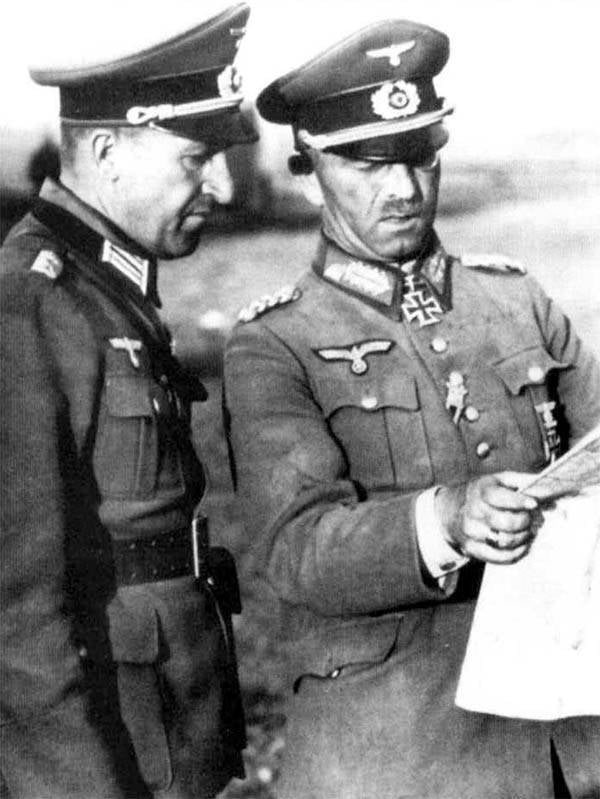
Like any other legend, the history of the Rassianian KB has a real basis, supported by serious sources, far from “journalism”. After World War II, the command of the American Army decided to use the experience of captured German officers. As a result, a group of prisoners under the leadership of Colonel-General Franz Halder wrote a series of reports. Here is an excerpt from one such report:
Another similar report tells the story of a battle with KB, which became the basis for a legend about a single tank that stopped an entire Tank Group. For a change, I will cite the same text from the Soviet edition: “However, one of the KV-1 tanks managed to get in the way of the German forces on the northern bridgehead, and block them for several days. The first unsuspecting German supply vehicles were set on fire by a tank ... Attempting to hit a tank with a 450 m battery 50-mm anti-tank guns, just then adopted, ended with heavy losses for the crew and the material part of the battery. The tank remained intact, despite 14 direct hits. Shells only made dents on the armor. When the camouflaged 88-mm gun was pulled up, the tank quietly allowed her to take up a position at a distance of 600 m, and then destroyed it and the crew before they opened fire. Attempts by sappers to undermine him at night were also unsuccessful ... Finally, he became a victim of German cunning. 50 tanks were ordered to imitate an attack from three sides in order to divert the tank’s attention to these areas. Under the cover of this false attack, we managed to disguise and equip the position for another 88-.mm anti-aircraft gun in the rear of the tank so that this time it was able to open fire. From 12 direct hits, this 3 cannon pierced the tank and destroyed it. ” These are excerpts from the brochure “Methods of Combat Operations of Russian Forces in the Second World War”, published in the USA in 1950 and translated and published in our “Collection of Military Historical Materials of the Great Patriotic War” Issue No. 18, M: Voenizdat, 1955, with . 150. Note that the report gives the impression of a multi-day unsuccessful siege of a tank due to the fact that there is no chronology of events, reference to time and dates. However, to deny the very fact of the problems that have arisen as a result of the actions of a single KB is pointless, this fight is mentioned not only in pop literature, but also in quite respected publications.
Well, let's try to figure out what happened in the small Baltic town of Rassenyay in reality, who stopped whom and how, and what is the role of the legendary miracle weapon in this whole story. First you need to imagine the scale of events and the general situation at the front. It is on the map that the arrows of the attacks of the Tank Groups seem small and a lone KB can easily be imagined in the path of one of them. The scale of the operation of even one tank group spanned tens and hundreds of kilometers. The tank group was advancing not along one road on which KB lurked, but along several parallel, on a fairly wide front. And if some part of it could be delayed for one day by one KB, blocking the road to the bridge across the Dubissa River, then the rest of the tank divisions moved along neighboring roads into the USSR, not even suspecting the existence of this same KB near Rassenim. For example, the entire 56th motorized corps of Manstein, which was moving non-stop at that time to Dvinsk (Daugavpils). To his left was the German 41 motorized army corps, whose 1 and 6 troops were attacked, and the 12 MK and 2 army of the 3 MK, which owned the same KV. The 1-th Panzer Division of the Germans advanced from the border through Skaudavile, Kelme and further to Šiauliai. The 1th TD of the 41th Army Motorized Corps, as well as the 36th Motorized Division of the same corps, did not interfere with the lone KB at the bridge across Dubissa, this bridge remained aloof from the direction of movement of the other two divisions of the 41 AK (MOT). The 1th TD had a different interest, the capture of the railway bridge across Dubissa. This 300 meter bridge was located downstream of the bridge that held the Raseniai HF. He was captured by a special group 1 infantry regiment of the division, together with special forces of the Wehrmacht, regiment 800 Brandenburg in the evening of 23 June. Its capture removed for the 1th etc. the problem of overcoming the Dubissa River and the way of moving deeper into the Baltic. Moreover, the second kampfgroup (combat group) forced the river at another point downstream. The 6-I Panzer Division of the 41-th Motorized Corps of the Germans was divided into two battle groups, the Campus Raus and the Campedge Seckedorf. A battle group, or, in German terminology, “camp group,” is a temporary organizational structure that includes tanks, motorized infantry, artillery, and sappers. As a rule, tank divisions were divided into two, less often into three battle groups. Often in the composition of battle groups included means of strengthening the corps link. In a word, the 4 Tank Group is a steam rink several tens of kilometers wide, the “track” width of which significantly exceeds even the radius of action of the KV gun. Not a single tank, no matter how good it may be, simply physically could not stop the army of many thousands, advancing on a wide front. Words about a stopped Tank Group can only be regarded as evidence of the incompetence of the author of such a statement in operational matters.
So, from the level of the tank group, let us go down to the level of the corps and division. In 15: 00 23 June, the Zekedorf Kampfroup of the 6 Panzer Division captured Rassenay and a small foothold on the right bank of the Dubissa. However, during the evening and night, the Germans were knocked out of this springboard. Apparently, this was done by the 2 th motorized rifle regiment of the 2 th tank division of the 3 th MK. I will quote the memoirs of D.I. Osadchy, who commanded the 5 tank company of the 3 tank regiment of the 2 tank division: “On the outskirts of Raseinia, part reached the planned deployment line. A few kilometers from us on the west bank of the river Dubis fought with the enemy 2 th motorized rifle regiment of our division. ” (VIS. 1988. No. 6. S. 54). In total, 2-th TD 3-th MK had 30 tanks KB and KV-2 (P.A. Rotmistrov, “Time and tanks”, Voenizdat, 1972 g., P. 64), about 220 BT-7 and several dozen T -26. The division was formed in the first decade of July 1940 on the basis of the 6 th light-tank brigade and, like all the tank divisions of the first wave of formation, had satisfactory completeness at the beginning of the war. For example, the cars in the 3 mechanized corps were 76% of the state. In a word, 2-I was not the worst connection of the Red Army. The next morning, with the first rays of the sun, tanks and motorized infantry 2-td crossed the river Dubissa and attacked Zekedorf's 6-td headquarters in the forehead. According to Colonel Helmut Ritgen, who served as adjutant of the 1941 Battalion of the 2 Tank Regiment of the 11 Td in June 6, KB tanks made an indelible impression, but rather quickly the Germans were able to beat out their concentration of fire, first on one, then on the other ( 22 June - august 1941, p.114).
Contrary to the prevailing view of the "invulnerability" of the KB, the Germans had the means to effectively deal with them. Halder 12 July 1941 wrote in his diary the following: “e. Fighting tanks. [...] Most of the enemy’s heaviest tanks were hit by 105-mm cannons, fewer by 88-mm anti-aircraft guns. " Note that in the first half of the day 24 June, the 88-mm anti-aircraft guns were not supported, the anti-aircraft guns arrived only around noon. Prior to this, the division used its own artillery, in particular, 105-mm, mentioned by Halder, or, in German terminology, 10-cm guns. In the 6-th td those were four pieces (D. Glantz, Op. Cit, r.109). Appropriate tools were also used, such as laying under the caterpillar of moving KB anti-tank mines.
The Luftwaffe aircraft did not participate in the battle; Ritgen spoke of them as follows: “Throughout the day of support aviation We have not received". But anyway, the offensive impulse of the 2nd AP of the 3rd MK was stopped, and in the afternoon the Germans went on the offensive. The mortar mortars supported the offensive, the Nebelwerfer, who, according to Ritgen, howled, exerted a moral influence both on the Soviet troops and on the 6th soldier. There were no irretrievable losses of tanks in the Ritgen battalion, two tanks received hits. More significant losses were suffered by the 114th Motorized Regiment. Ritgen describes the apocalyptic picture of wrecked and inverted cars, killed soldiers of this regiment, which opened to him at the battlefield from the 2nd TD. But if we ignore the emotional description of the oncoming battle that took place on June 24 (see the above quote from Armored fists), then the result at the end of the day on June 24 was in favor of the Germans. The 6th TD, equipped with Czech 35 (t), succeeded in stopping the advance of the Soviet Panzer Division armed with KB and KV-2 tanks, and by the end of the day and dropping the 2nd TD to its original positions. And the point here is not in miracle weapons, but in those things that are usually forgotten when comparing tank forces. Not shining with the number and power of the tank fleet, the 6th TD had a strong artillery fist, reinforced by the attached anti-aircraft guns and Nebelwerfer. And it simply surpassed the 2nd TD in terms of the number of personnel, primarily infantrymen in field-coat overcoats with rifles and machine guns. For some reason, they are constantly forgotten about their presence in the Panzerwaffe divisions.
But against the background of the generally unsuccessful debut of the Soviet tank division, the Germans had an unexpected problem. One of the KB 2-td, around noon, 24 June turned left and took up a position on the road parallel to the direction of the offensive of the Zekedorf camp, behind the Campus of the Raus. Ritgen describes it this way: “The tank KB, which reached the north bridge across the Dubissa river, blocked it and broke off contact with the bridgehead captured by the Rouse campus. All attempts to destroy this tank failed, including the fire from the 88 mm cannon and the night sappers raid. ” (David M. Glantz, 22 June - august 1941, p. 114). The supply trucks that went to Kampfgroup Raus became a victim of the Soviet tank. This KB became the basis for the legend about the stopped 4 th TGr. The combat log of the 11-th tank regiment 6-th TD reads:
Kampfgroup or about half of a division, especially reduced by a company drawn into the reserve, is still not a whole tank group or even a division. Further, the main opponent of the lonely KB in question was the Köppfroup Zekedorf. After a night raid by sappers who had just scratched a tank, they were secondly engaged with an 88-mm anti-aircraft gun. A group of tanks 35 (t) distracted KB with its movement, and the calculation of 88 Flac achieved six, and according to other data, twelve hits in the tank. Following the myth of a stopped tank group, the myth of a multi-day siege of one tank fell. KB occupied the supply routes of the Kampfroup Raus from noon on June 24 until the morning of June 25, and until late evening on June 24, the main concern of 6 td was a head-on fight with the entire 2 td, and not with one tank.
June 25 initiative finally passed into the hands of the Germans. There was a reaction of the leadership of the 41-th AK (mot) of the Germans to the counterstrike 2-th etc. In 13: 30 24 June 1-td received the order of General Reinhardt to turn to the area of Vosilkis-Greenshkis "to destroy the brigades in front of the front of 6-td". In the evening of 24, the campus group 1-td reached the number of Greenshkis, thereby intercepting the supply route of the 2-t from the north. In addition, by this time reached Dubissa and forced her German 269-I infantry division. As a result, the situation arose when 2-I, etc., was covered from three sides by three German divisions. In a fight in the ratio of 1: 3, the chances of success were slim. Inside the emerging ring of encirclement, it turned out to be a KB at the bridge over Dubiss, blocking the communications of the Campus Rouse group. So even if the tank had not been destroyed by 25 in the morning, its crew could no longer influence the fate of the surrounded 2 Panzer Division. Attempts by the 2 td to break through their own orders through the 1 td orders of the Reinhardt corps at Scaudaville were unsuccessful. The Germans again used heavy artillery against the attacking KB, in particular the 105-mm cannon. Tanks 1 th TD used against KB sabotage shells from a distance of 30-60 meters. The whole 2-I td, which included more than a dozen KV-1 and KV-2 was killed in those battles. Part of the tanks was hit, some destroyed the crews in the environment. Colonel Poluboyarov 11, July 1941, head of the North-Western Front Automobile and Tank Directorate, reported: “The entire 5 mechanized corps (Kurkin) died. [...] It has been withdrawn for the time being and has already been gathered up to 400 people of the remnants that have left the encirclement from the 2 Panzer Division (Solyankin) ”. For the sake of fairness, it must be said that the actions of 41, etc., nevertheless had some influence on the dynamics of the 2 th promotion (AK). The pace of advancement of the 41 of the motorized corps was lower than that of the parallel Manstein 56 corps: in the first week of the war the 41 corps lost to the NNXX for three days.
What global and local conclusions can be drawn from this story? First, it clearly enough marks the boundaries of the reachable by the “sword of the kladentsom” of the twentieth century, the tank in the singular and in isolation from the organizational structure. A miracle tank can influence the actions of tactical units, campframes, regiments, but not even divisions, not to mention the army or the Tank Group. The balance of the shield and sword is always quite fragile and if the battalion or regiment fails to cope with the miracle tank, at the level of the division and corps there are 105-mm cannons and 88-mm anti-aircraft guns. The “invulnerability” of the KB tank, as well as the “invulnerability” of the Tigers and Panthers, was very conditional, there were always means capable of crushing them.
Secondly, this fight makes you think about the issues of tactics and operational art. Why did one tank cause so much noise, although dozens of similar tanks were safely ground nearby? And not only by encirclement, forcing tankers to destroy materiel themselves, but also in a head-on collision with German 6 and 1, etc., when KB were destroyed by artillery and German tanks. Obviously, the enemy must be hit not where he is strong, but where he is weak, using maneuver to reach the point of pain.
The flanking maneuver of a single KB had an impact on the advancing Germans, comparable to a frontal collision with a dozen tanks of this type. This happened precisely because the blow fell on the weak point of the construction of the German tank wedge, along the supply path of one of the campfroups. The most effective way of dealing with motorized wedges was strikes to the flank, ideally leading to the encirclement of broken mechanical parts, and in general, forcing them to stop their advance and take up the flanks.
These considerations were known to Soviet commanders. Initially, the counterattack was conceived as a classic "cannes": in the center is a strong defense of an artillery anti-tank brigade and two flank attack groups from 12-th MK and 2-th td 3-th MK. Head of the North-Western Front Automobile and Tank Directorate Poluboyarov reported on the tasks of the 2 and the 3 of the MK: “I made a decision and set the task for Kurkin: to advance from the Rossiena area in the western direction to the Taurage-Shaulyay road” , d.221, l.3928). If we proceed from the thesis that you need to hit the flank of the shock group moving to Siauliai, then the decision is correct. In the introduction of the headquarters of the North-Western Front No. 28 to 8: 02 10, it was stated: “using three tank divisions and one motorized (00 and 23.06.1941 mechanized corps) inflict a concentric attack on the enemy’s main grouping the purpose of its defeat "(TsAMO F.3, op. 12ss, d.221, l.3928). But in the harsh reality, it turned out that through the point that was supposed to be the initial place of the counterstrike, the city of Rasseniy (Rossiyeny), the way of the onset of 6-th and 27-th motorized army corps of the Germans. The front of the attack of the German shock group turned out to be wider than the leadership of the North-Western Front assumed. Accordingly, the tasks were not appropriate to the situation. Instead of a flanking strike, the oncoming battle turned out and the effective flank maneuver was limited to only one KV tank. The trace that this tank left in the documents and memoirs tells us about the possible scale of success that could be achieved with an effective flank attack on the tank wedge. The 6 Soviet commanders knew WHAT to do, but did not yet know how to do it.
But, most importantly, against the background of real events, the image of KV-Odin, a mythological character who stops tank groups, faded. The simple, banal idea of the role of man once again receives its weighty confirmation. It was the crew or tactical commander who pointed the KB to immortality, sending the war machine to the weak point of the German destruction machine. At the same time, the role in slowing down the pace of movement of the German 41 motorized corps is not a separate machine or person, but the organizational structure of the 2 Panzer Division, whose name does not appear in the legend. The 1-I tank division mentioned in the canonical text was deployed not in the name of a single KB, but in the name of an environment of the 2-th, etc., entirely. The entire day of June 24, the German tank division did not fight with one tank, but reflected the advance of the tank division of the 3 th mechanized corps. The statement that the 41-th AK (motor.) Was detained by one KB is absurd, the statement that the 41-th moto-corps was detained by the 2-second tank division is quite true. The time of technological wars and mass armies gave the palm to non-technology, new time gave rise to collective heroes, the place of Siegfried and Odinov was occupied by regiments and divisions. It was not for nothing that divisions, corps and brigades were given honorary titles - Fastovskaya Brigade, Tatsinsky Corps. Industry may receive new tanks, guns, cars, but they do not determine the success or failure of the compound operations. Determines the harmonious organizational structure of the division or brigade, competent commanders and fighters. The 91-th Fastovskaya brigade of I.Yakubovsky without “Durendaley” and “Escaliburov”, on ordinary T-34-76 with “nut”, earned its title in the autumn of 1943.
The true heroes were those regiments and divisions, their fighters and commanders who fought at the borders in the terrible June 1941. The American historian David Glantz said about them "continuous and irrational, often useless Soviet offenses imperceptibly destroyed the fighting force of the German troops, caused losses that led Hitler to change his strategy and, ultimately, created the conditions for the defeat of the Wehrmacht near Moscow. Those Soviet officers and soldiers who survived their (offensive) serious and expensive fire baptism ultimately used their accelerated training to inflict terrible losses on their tormentors ”(David M. Glantz Barbarossa. The Hitler’s invasion to Russia 1941, p.206 my translation). The crushed and shot 6 vehicles, etc. were albeit modest, but the contribution of 2, etc., to the destruction of the combat strength of the German forces. But more importantly, the future famous commanders of the Great Patriotic War were leaving the mangled, charred bodies of combat vehicles in the Baltic States: P.A. Rotmistrov, I. D. Chernyakhovsky. Few then known to the Red Army commanders had yet to test the lessons of "accelerated training" in the battle near the borders of the Baltic states on the Germans.
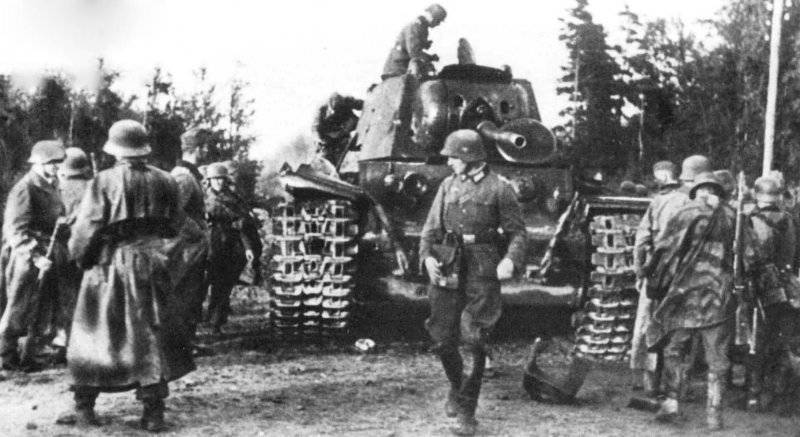
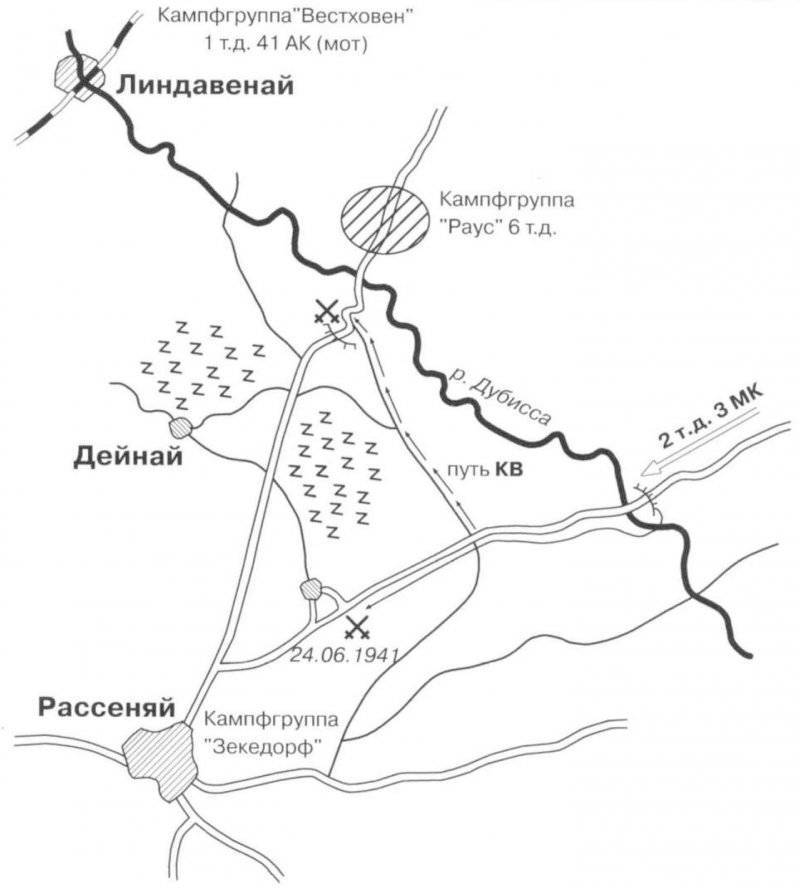
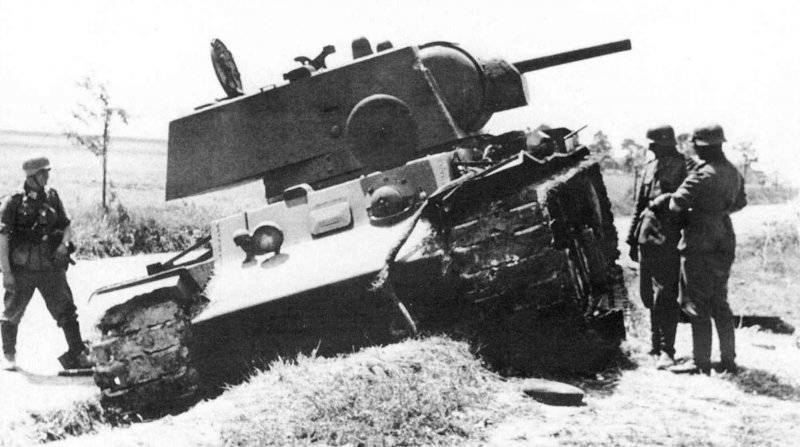
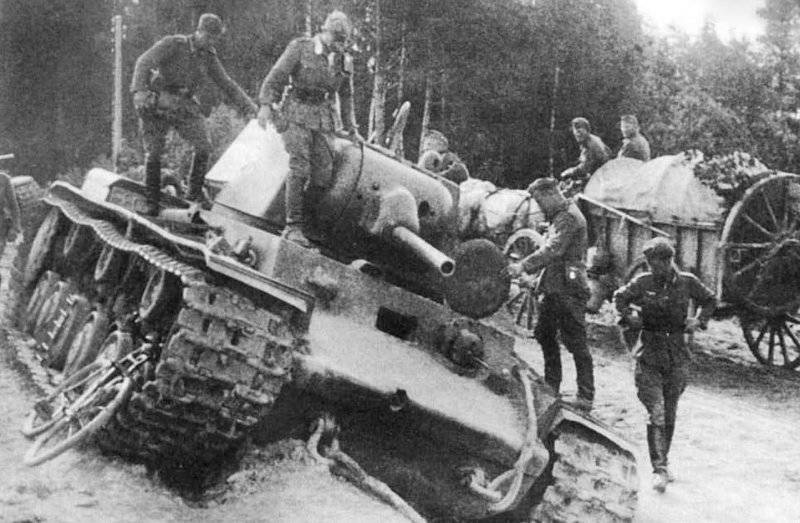
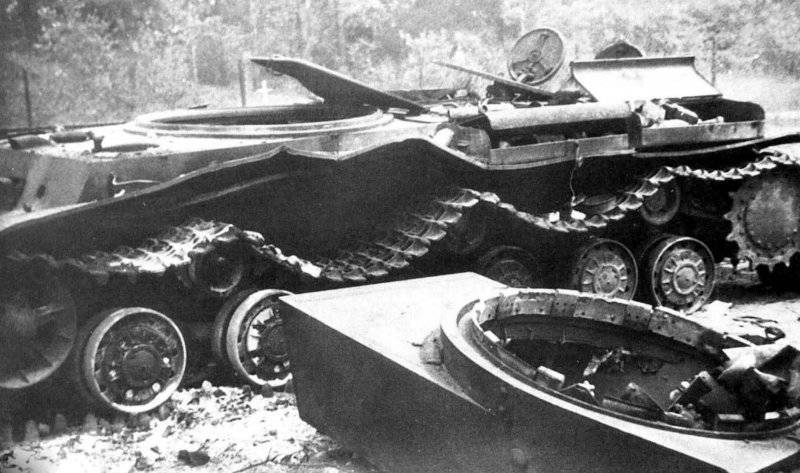
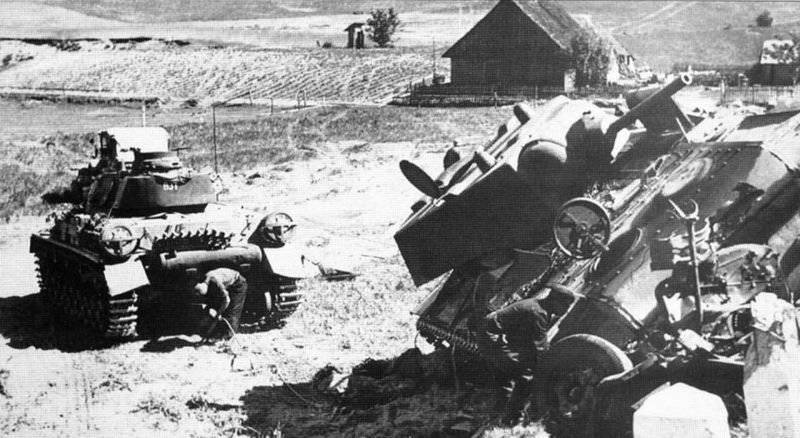
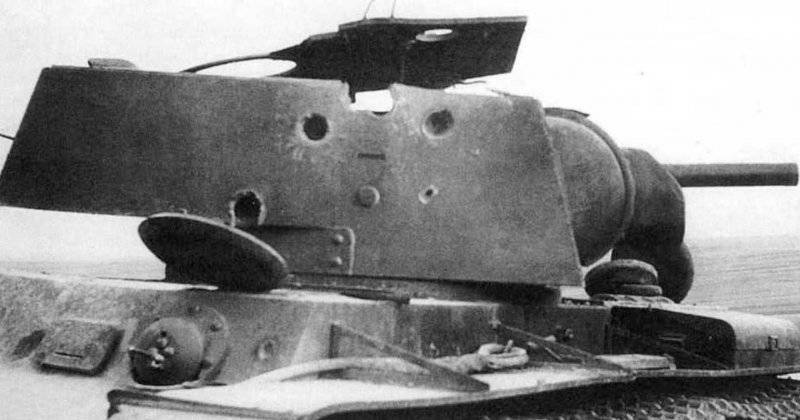
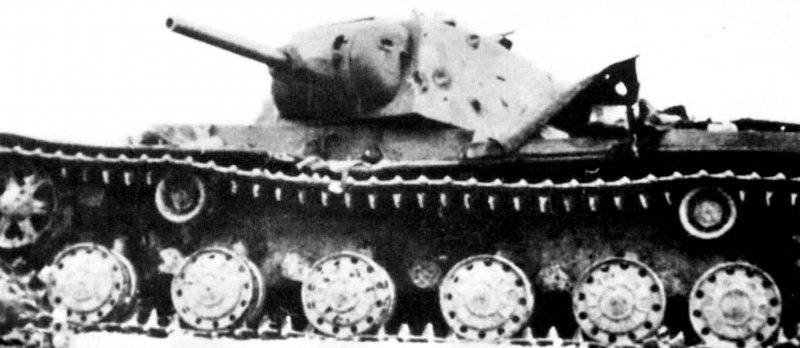
Information